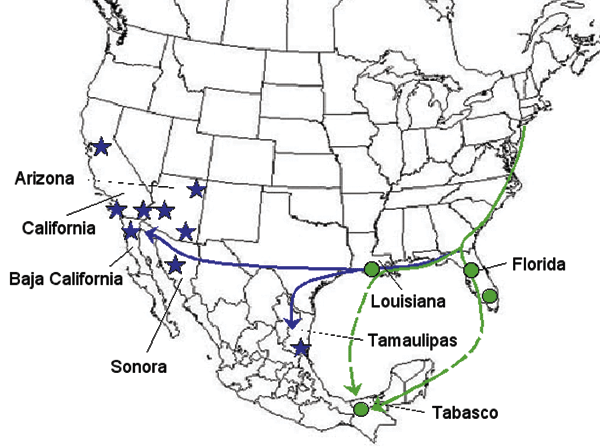Volume 12, Number 2—February 2006
Dispatch
Introductions of West Nile Virus Strains to Mexico
Figure 1

Figure 1. Map showing hypothetical routes of West Nile virus introduction into Mexico. Circles indicate locations of isolates in the Florida-Louisiana-Tabasco 2001–2003 clade (Figure 2). Stars indicate locations of isolates in the California-Arizona-northern Mexico clade.
Page created: February 02, 2012
Page updated: February 02, 2012
Page reviewed: February 02, 2012
The conclusions, findings, and opinions expressed by authors contributing to this journal do not necessarily reflect the official position of the U.S. Department of Health and Human Services, the Public Health Service, the Centers for Disease Control and Prevention, or the authors' affiliated institutions. Use of trade names is for identification only and does not imply endorsement by any of the groups named above.